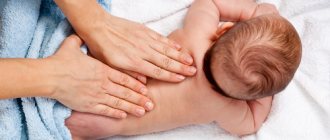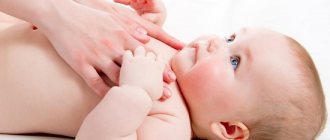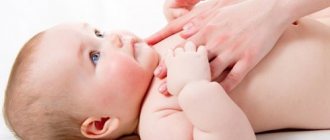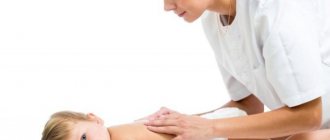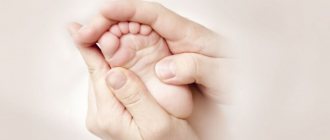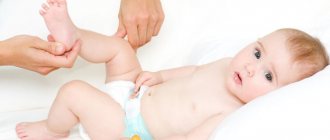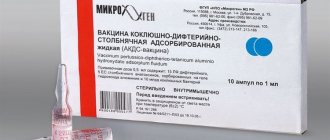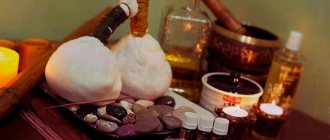HOW LONG DOES A CHILDREN'S MASSAGE LAST? The duration of a baby massage may vary. The duration of the procedure and the number of days depends on the general condition of the child, indications for the procedure and other features. What matters is what pathology is diagnosed and how advanced it is.
The duration of baby massage performed for preventive purposes depends on the following indicators:
Age. Psycho-emotional and physical condition of the baby. How long should a baby massage last? For very young children, the time of a baby massage directly depends on their mood and takes on average 30 minutes. At the same time, it is impossible to say unambiguously how long the session lasts. The first time the procedure does not last long.
The average manipulation time for children from 6 months to 1 year is 30-40 minutes (this also includes developmental gymnastics exercises). You can increase it if:
The baby has no negative reaction. He is completely healthy. A mother can do preventive procedures for her baby every day. Depending on the baby’s mood, the lesson can be shortened or skipped.
If the manipulations are carried out by a specialist, then the duration of the baby massage courses is 10-15 sessions, which can be repeated if prescribed by a doctor after 3 weeks. Classes are recommended for a child during a certain period of his/her growing up - this is in:
1-2 months. 3.5-4 months 6 months 9-10 months The duration of sessions for children from 1 to 3 years lasts 40-50 minutes.
For children of preschool and primary school age, it is advisable to present preventive classes in a playful way. Children's massage is done to each other or to themselves, combined with various rhymes, jokes, and songs. There are no time restrictions. The main rule is that the procedure should provide physical pleasure and be psychologically comfortable. Experts recommend that massage therapists, when performing manual treatments for this age group, do not exceed ¾ hours. If you do not a general massage, but a zonal one, then the approximate duration is as follows: Back - 30 minutes. Cervical spine - 10. Collar area - 15. Thoracic area - 20. Lumbar-sacral area - 20. Upper and lower extremities (arms, legs) - 10. Head - 15. The time can be adjusted, but when adjusting it, you must remember that Longer doesn't mean better. The main thing is the child’s well-being and psychological state.
At 2 months, you can already call a massage therapist for a restorative massage. If you carry out a course at this age, then at 3 months it will not be difficult for a baby to start rolling over. Newborns at this age are still in physiological hypertonicity, but they are already beginning to raise their heads from the surface on which they are lying, fix their gaze on objects and can follow them, some even turn their heads to the right and left while lying on their stomach. Of course, two-month-old children have their own set of exercises, which include a little more techniques for the limbs, neck, and reflex reactions than at one month of age. The main goal of baby massage at 2 months is to strengthen the neck extensors and reduce overall muscle tension. Practicing movements for coups in the background. It is important to monitor the child’s emotions; if he doesn’t like something, it is better to switch to another exercise or change position. Babies at 2 months are not known for their patience and a “scandal” can easily happen). But experienced specialists don’t get to this point.
About the benefits of massage
The benefits of massage for a child’s body are as follows:
- The emotional connection between mother and baby is established and deepened. Of course, if she performs the relaxing massage technique herself, and not a professional massage therapist.
- It is possible to achieve improved blood circulation, elimination of nervous, hypertonic and hypotonic muscles, orthopedic disorders (poorly developed hip joint, etc.).
- Elimination of residual reflexes (Moro, Babinsky, grasping, etc.), which in a 3-5 month old baby should be replaced by acquired skills and abilities.
- Development of the baby’s musculoskeletal system, stimulation of the lymphatic, nervous and even digestive systems.
- Regular massage leads to an increase in protective functions, the immune system begins to work, resisting diseases.
Is there any harm?
Massage can be harmful if any action causes the baby to cry. The baby may not like the actions themselves that cause him pain or the attitude of the person performing the massage towards the process. Therefore, the benefit comes only from a gentle, targeted effect on different parts of the child’s body.
But massage is also harmful when it is done inappropriately or using the wrong technique. When deciding on massage sessions, you should remember that the procedure must be carried out after the doctor’s permission. “Amateur activity” here is fraught with unpredictable consequences!
Preparation
Massage in any form is a necessary condition for the proper and healthy development of the baby. However, massage procedures should not be carried out if he has cold symptoms or is scheduled for vaccination.
Immediately before the massage, the child should be well-fed and rested, which will allow for a high-quality massage procedure. The massage should be carried out on a hard surface, for example, on a table covered with a diaper. The room for massage should be clean, warm and pre-ventilated.
At what age should the procedure be performed?
Your pediatrician will help you correctly answer the question of how many months a newborn can be massaged. It is better to start using a restorative massage at 20 days of age. Until the baby reaches one and a half months, the only movement allowed for use is stroking.
Indications and contraindications
Indications for general baby massage are the presence of:
- decreased or increased tone;
- increased nervous excitability;
- nervous condition, neurological disease;
- infantile colic;
- flat feet or club feet;
- diseases of a cold nature;
- hernias;
- disorders associated with the musculoskeletal system;
- difficulty breathing.
A course of massage, as an adjuvant, can be included in a complex of therapeutic actions prescribed for patients with bronchial asthma and pneumonia.
However, you should not massage your baby:
- with fever accompanied by elevated body temperature;
- with a runny nose;
- for diabetes mellitus;
- with a disease accompanied by purulent wounds or pustular skin lesions, any types of rash;
- with rickets;
- a patient with tuberculosis;
- with diseases of the lungs and bones;
- with congenital heart disease;
- with hepatitis.
Ball
When working out at home, it is very good to use a massage ball. When asked about what age it is best for babies to use a ball, we answer: “From the 2nd month.”
- While your baby is small, simply bounce him on the ball on his tummy.
- Ride your three-month-old on his side and back.
- A six-month-old baby is placed on a ball and placed on his legs.
- And at 9-10 months the child can take steps, holding the ball with his hands.
The ball can also be used for massage. To do this, the baby is placed on top of the ball on his tummy and rocked
https://youtu.be/aluvE9lLwrY
Varieties
According to the degree of impact, the method of implementation and the pursued goal, massage is carried out as therapeutic, preventive and therapeutic-prophylactic:
- Therapeutic massage for infants, as well as therapeutic and prophylactic massage, should be performed only by a specially trained employee of a children's clinic or a professional massage therapist. Each disease uses its own techniques, which differ significantly from each other.
- The use of preventive massage is recommended for all newborns, provided there are no contraindications. Preventive massages are carried out mainly by parents, which improves the psychological state of the baby.
Massaging a newborn
You need to massage your baby with light stroking movements. The use of movements using force is unacceptable:
- The process should begin with the baby's hands. We massage each finger, then unclench our fists and pay attention to relaxing our palms. Smoothly moving to the wrists, we continue to massage, rising higher. In this case, there is no need to massage the armpit.
- After the handles, you need to smoothly move to the legs. First, massage each foot, without bypassing any of the toes. Then, with light massaging movements, move from the feet to the groin area. There should be no impact on the knee joints and popliteal area.
- Now it’s time for the tummy. You can properly massage a newborn only with the help of stroking, starting from the navel and moving clockwise.
- Next, with clasped hands, you need to walk over the baby’s body with sliding movements: with one hand up, the other down. In this case, it is not recommended to touch the genital area.
- Massaging the baby's chest begins from the sternum, gradually moving towards the shoulders, then from the sternum towards the sides. No manipulations are performed in the area of the mammary glands.
- After turning the baby onto her tummy, you need to perform a gentle neck massage. At moments when the baby attempts to lift or turn his head, movements should be stopped.
- After the neck, the movements move to the back. Basically, the area from the lower back to the shoulders, from the spinal column to the barrels is worked out here. The spine itself should not be massaged.
- It is recommended to stroke the buttocks starting from the sides of the hips and ending with the tailbone.
- With the baby lying on his left side, walk along the lines near the spine. The movement should begin from the sacrum towards the head. During performance, the child should slightly bend forward. Manipulations should be done no more than three times. Repeat the same with the right side.
- Returning the child to its original position, massage the head without touching the fontanel area. It is necessary to pay attention to the ears.
- The session ends with stroking the baby’s entire body.
Basic conditions
- You can start massage sessions when the baby reaches 20 days of age.
- In children under 3 months of age, massaging the fontanel area, popliteal, elbow, axillary areas, as well as the inner thighs is prohibited.
- The use of pressure, impact movements, and patting is prohibited.
- Massaging a baby with long nails is not allowed. It is recommended to keep your hands free from jewelry to prevent possible damage.
- The procedure should be carried out in a room with a temperature of 18–23 degrees.
- The baby's body should only be massaged on a prepared changing table or other flat surface. For covering, you can use a blanket, oilcloth or diaper. The width of the surface should be sufficient for the baby to easily turn over.
- Massage for infants should take from 10 to 20 minutes. In the future, it is allowed to gradually increase the complexity of the exercises with increasing time intervals.
- The procedure should be carried out at the right time (1.5-2 hours after feeding).
- Before starting the massage, the baby should be suspended in an upright position for some time. This will rid the body of accumulated air and the child will not regurgitate during the procedure.
- When massaging the baby’s body, you definitely need to talk to him. You can use any children's songs and rhymes. This will contribute to the development of the child’s hearing and speaking abilities.
- To improve the quality of massage, the use of special lubricant is allowed. Allowed to use: grape, apricot, almond oil. If you want to use other liquid products, you must first conduct a test to identify an allergic reaction.
Massage techniques
Massage for an infant is carried out using:
- Stroking involves sliding over the surface of the baby's skin, accompanied by pressure of varying strength.
- Rubbing is a displacement of the skin with stretching of the underlying tissues, the formation of a skin fold.
- Kneading, in which the skin is fixed with a massaging hand, followed by squeezing or squeezing, turning into rolling. This technique is mainly used by specialists.
- Vibrations are the actions of a massage therapist who transmits oscillatory movements of varying amplitude to the child’s body.
Gymnastics for newborns
Gymnastics for infants is one of the ways a newborn can communicate with its parents and establish tactile contact. During classes, the baby feels the mother’s gentle touch, which has a beneficial effect on the child’s development.
In addition, with the help of gymnastics:
- the baby learns to control his body;
- proper development of coordination of movements occurs;
- the ability to sensory perception develops;
- the baby learns to use speech abilities and hearing, because the mother voices all her actions used during gymnastics;
- reflexes develop that are responsible for mastering crawling and “walking.”
Equipment by month
Massaging a newborn baby is the main task of every mother. But it is important to remember that each age has its own massage technique.
Up to 4 weeks of age
The following massage techniques are recommended for babies under 1 month:
- stroking accompanied by stretching of the body;
- gentle kneading of the skin with light friction;
- crossing your arms over your chest;
- leg spread;
- turning the body from the back to the side, then onto the tummy.
For a 1 month old baby
Massaging movements are supplemented by vibrating and kneading techniques. The impact of massage manipulations is carried out on the arms, legs, back, gluteal areas, feet and fingers.
Massage procedure for 2-month-old babies
The techniques are complemented by neck massage, which helps strengthen the cervical vertebrae:
- stroking movements;
- exposure to vibration;
- working out the spine by lightly massaging the back so that it leads to flexion and arching of the baby’s spine;
- massaging the tummy in a circular motion;
- stroking the breasts;
- rocking the baby in the fetal position.
For 3 month old babies
At this age, a restorative massage for infants helps eliminate muscle tension. The technique consists of stroking, shaking, vibrating, rubbing (without pressure) movements. The usefulness of massage increases by adding gymnastic exercises.
You can clearly see how to massage children 1-3 months old in the video. Channel “House of Massage MM”.
Massage for 4 month old babies
The impact of passive manipulation is replaced by the use of energetic techniques.
You can build your baby’s muscles with:
- pinches;
- twisting;
- felting, when the body is transferred from a lying position to a sitting position and vice versa;
- techniques for massaging the legs are complemented by bending and leveling;
- You can develop motor skills in your baby by allowing him to grasp small objects.
The massage can be supplemented with gymnastic elements.
For 5 month old babies
The massage technique is similar to the techniques used in the previous month. Only movements that work the facial area and techniques that develop fine motor skills are added. Increased stimulation of the massaged areas is allowed, the result of which is manifested by the correct formation of phasomotor functions, stabilization of the condition of muscle tissue and general improvement.
Turning the baby's body over and changing posture should be accompanied by support for the arms. In order for a child to learn to sit in the prescribed time frame, you can practice the exercise: take the hands of a baby who is in a lying position, slightly pull them up, thereby inviting him to sit down.
For 6 month olds
The use of movements that massage the arms and legs becomes an optional technique. Now attention should be focused on working the back, chest and tummy. The impact of finger massage should occur in a playful way, accompanied by the telling of rhymes. The technique used in finger massage has a positive effect on the development of intelligence, fine motor skills, and the speech apparatus.
Features of the procedure after six months
When the child reaches six months of age, a change in massage technique occurs. The number of massage techniques is reduced, and the physical activities used become more varied.
Now the use of massage techniques and exercises is aimed at developing the child’s ability to:
- raise the body;
- pick up objects of different sizes;
- crawl to get to the toys.
Massage technique for infants after six months consists of the following movements and exercises:
- Slowly and quickly crossing the arms.
- Tummy rolls. The baby can do this exercise on his own, but he needs a little help in the form of a push.
- A variety of actions that work the back and gluteal areas.
- Learning to crawl on knees with straight arms, forming muscles in the back, limbs and shoulders. At the age of 8 months, these exercises are available for the baby to perform independently. At a younger age, you cannot do without support.
- Massaging the breasts.
- Abdominal massage.
- Training the muscles that support the abdominal cavity with squats. At 7 months of age - with support from two handles, at 8 months - with support from one handle.
- Bending and straightening the legs.
- Raising and lowering straight legs.
- Stroking the feet.
Ball
The fitball can be used when the baby reaches the age of 1 month. You should start getting acquainted with the ball by simply lying on it so that the baby can get used to it. Rocking on a fitball has a beneficial effect on the functioning of the vestibular apparatus.
After your baby gets used to the ball, you can start doing other exercises:
- At 2 months of age, raising the baby’s legs above the ball, you can swing them in weight. At the same time, the child can come into contact with the fitball with both his stomach and back. To strengthen the muscles of the spine, neck, and limbs, the head should be lowered.
- It is very useful for the baby to be on a vibrating ball. The main thing is that the legs are straight and the spine is straightened. A more complicated option is swinging on a ball with arms crossed on the chest.
- At 3 months of age, it is allowed to bend the baby’s legs and press them to the stomach. Rocking has a positive effect on the development of the hip joints.
Rocking on your tummy
Rocking on your side
Rocking on your back
Leg curl while lying on your back
Before applying the above manipulations, a short massage session is recommended. The use of fitball exercises is especially useful for children with complicated orthopedic and neurological diseases. You can carry out the procedures in the mornings and evenings, devoting 15 minutes to them.
When to contact professional massage therapists?
Unlike a general restorative massage, which a mother can perform on her own, it is better to entrust the use of therapeutic massage techniques to a doctor who has undergone special training. You can contact a massage therapist with a secondary or higher medical education who is trained to work with children. But when contacting a massage therapist, do not hesitate to ask about his qualifications. It’s better to clarify this issue before starting work, it’s important!
Indications and contraindications for therapeutic massage
The need to undergo one or more courses of therapeutic massage is due to:
- malnutrition;
- rickets;
- muscle hypertonicity;
- hallux valgus and flat valgus deformity of the feet;
- residual reflex of the newborn;
- tremor in various parts of the body;
- lesions of the central nervous system;
- Cerebral palsy (cerebral palsy).
- umbilical hernia;
- hip dysplasia;
- torticollis;
- clubfoot, flat feet, leg deformities;
- scoliosis;
- deformation of the thoracic region;
- deformation of the legs (X- or O-shaped).
The use of massage manipulations is prohibited:
- in children with osteomyelitis, phlegmon, abscess - this will provoke the spread of purulent processes;
- with enlarged lymph nodes for unknown reasons;
- with exacerbation of arthritis, tuberculosis damage to bone tissue and joints;
- children suffering from bleeding (for example, caused by hemophilia);
- with acute forms of kidney diseases, hepatitis, heart defects, which are in the stage of decompensation (in unstable condition);
- babies with low body weight with very large hernias in the umbilical, inguinal, scrotal and femoral areas.
Massage for colic
Since a colic session usually ends with a bowel movement, you need to be prepared for this moment in advance. You can cover the area under the baby's buttocks with a diaper or use a disposable diaper.
Gas massage has its own characteristics:
- It begins with placing the palm of an adult on the baby’s tummy. There should not be strong pressure on the baby's stomach. After several minutes of resting your hands, the abdominal muscles will relax, there will be fewer spasms in the intestines, which will lead to the baby stopping crying.
- The movements consist of stroking, periodically replaced by light pressure in the abdominal area.
- Touching a newborn should be done using the edge of the hand, which has a semi-bent state.
- You can apply pressure only with the pads of your fingers in the lateral areas and under the ribs.
- Impact with sharper movements is replaced by stroking techniques.
- The use of point or intense movements is prohibited. This can provoke an increase in spasm, which will not benefit the baby. Movements should consist of the simultaneous use of several fingers.
- After the muscle warm-up, abdominal work begins. Such actions are aimed at activating the work of the small intestine. The palms should be placed on the tummy, across. Movements performed in both directions begin from the ribs and stop upon contact with the pubic symphysis.
- The previous exercise should be replaced by stroking the area with the oblique abdominal muscles with one hand. At this moment, the second hand should be placed on the umbilical area.
- As an alternative or additional way to work the abdominals, you can use light pinching or drawing the contours of imaginary flower petals, with the navel in the center.
- Further actions are aimed at strengthening the reflexes of the abdominal muscles as a result of normalizing the functioning of the internal organs.
The main movement in a massage that eliminates colic is stroking with moderate force. It promotes the release of excess gases from the baby’s body. With your hands you need to influence the area in the abdomen, where the large intestine is located. If the procedure occurs at the time of the onset of colic, the implementation should be gradual.
Procedure for dacryocystitis
According to the famous pediatrician Komarovsky, the procedure for dacryocystitis should be carried out using gentle and careful vibrating movements. In this case, light pressure on the tear ducts is necessary.
It is important to follow the direction of movement! They should be done in the area of the corner of the eyes. The movements should begin from the top with the direction down. Regular use of the procedure will save the baby from the disease.
For dacryocystitis, the session should be carried out in accordance with the instructions:
- Carefully squeeze out the liquid formed in the lacrimal sac.
- Under the lower eyelid of the affected eye, drop a warm furatsilin solution at a rate of 1:5000. Using a sterile cotton swab, remove the pus.
- Having completed the manipulations, you can proceed to massage the lacrimal sac. The purpose of the action is to provoke a breakthrough of the elements that make up the embryonic tissue.
- Movements begin from the inner corner towards the bottom of the eye. Under pressure, the embryonic film breaks through.
For best effect, the course should be carried out over two weeks. It is better to start it when the baby is crying heartbreakingly. At this time, due to the tension of the baby, breaking through the gelatin film will be easier. The procedure must be performed carefully, since the bone separating the sinuses has not yet formed, and strong pressure can easily cause damage to the delicate cartilage.
Massage for umbilical hernia
The use of a tonic massage for a child with an umbilical hernia increases the benefits of general treatment. It is allowed to begin the procedure after three weeks, once the umbilical wound has healed. Sessions can be supplemented with a general massage.
Newborn navel massage:
- Using your full palm, you need to stroke the baby's tummy in the navel area. All manipulations with the abdomen should be performed in a clockwise direction. In the opposite direction, the direction of the arrow, the skin can be stroked only directly near the navel and only with the help of the index finger. Otherwise, the risk of interference with the digestive process and its disruption increases.
- Using an open palm, grab the oblique abdominal muscles starting from the barrels towards the center. Finish the technique by stroking in the opposite direction.
- Place the right palm above the navel, the left palm below the umbilical area. Moving your palms towards each other, stroke the skin around the navel.
- Using the pads of your index fingers, begin rubbing the oblique muscles, moving from the barrels to the area with the umbilical cavity. The movements made along the oblique muscles should be done in a spiral.
- Visually highlighting the line dividing the stomach in half, make indentations on it using the pad of the index finger. This technique will produce an immediate impact: the abdominal muscles will begin to work, caused by its tension. The regularity of performing these actions will result in strengthening the baby’s muscular frame.
- Use your index finger to press the hernia. Movements should be light, effortless. Repeat – 20 times.
Instructions for DTS
Massage for hip dysplasia should be performed once a day. The course consists of 10–15 sessions. To achieve the best effect, it is necessary to complete 2-3 courses. Since such a massage is a big burden for a baby, the rest between courses should be at least 1–1.5 months.
Massage for DTS, covering the entire joint, should be done with the baby in a supine position. But you can lay him on his back and massage the front surface of the thighs, and turn the baby over onto his stomach and work on the back surface.
Massage of the hip joint in newborns consists of the following techniques:
- Stroking, when movements are carried out with hands tightly adjacent to the hip joint. Moderate pressure is allowed, at which the skin under the hands does not shift, but slides under them.
- Use your thumb and index finger, or your entire palm, to make spiral movements. It is prohibited to touch the inner thighs (in close proximity to the genitals). Stroking should be carried out for 3-5 minutes, which should be completed by rubbing. The pressure should be stronger than when stroking; the hands do not slide over the skin, but displace it.
- For affected joints, rubbing is especially useful. It is best to do it using your fingertips for deep penetration into the muscles. The duration of use of the technique is 10 minutes.
- In addition, movements that rub the lumbar region, buttocks and feet are also useful for better blood circulation.
Procedure for tone in infants
Massage is beneficial in the treatment of increased, decreased or asymmetrical tone.
The purpose of the technique intended for use in complex massage is due to:
- degree of violations;
- the child’s health status;
- level of development of a small organism;
- existing contraindications.
Massage for newborns with hypertonicity
To reduce tone in a newborn, it is recommended to use the following massage and gymnastic techniques:
- Spreading the baby's arms in different directions, followed by crossing them on the chest.
- Alternating raising of handles, imitation of a mill.
- Moving the baby's hips to the sides.
- Rotation of the baby's hips along a semicircle trajectory, with their further return to their place.
- Performing the “little book” exercise, when the child’s legs are bent and held, from the inside with the thumb, and from the outside with the remaining fingers. Next comes the simultaneous spreading of the legs to the sides, imitating the opening and closing of a book.
- The gymnastics continues by lightly massaging the baby’s palms, for which, opening the fist, you need to stroke the inside of the handle.
- Then the baby’s feet are massaged: using the thumb, the number 8 is drawn, starting from the toes to the heel, and in the opposite direction. The correctness of the massage will be indicated by the toddler’s fingers squeezing and unclenching.
- After this, the baby should be placed on his tummy to stroke his back, starting from the base of his neck.
- Having turned the child onto his tummy, stroke his back in a clockwise direction.
- The session ends with stroking the baby's arms and legs, starting from the outside of the fingers and going up.
The duration of the course is 10–15 sessions, which should be carried out monthly.
Massage for a baby with hypotension
For a child with hypotension, massage helps to activate and stimulate the muscles. The main feature of the technique is the movements performed: from the periphery, directed to the central part of the body.
The session contains the following manipulations:
- The child lies with his back down. Place your finger in the baby's palm. Holding it, walk along the handle with stroking movements, starting from the wrist and ending with the shoulder. Using kneading movements, massage the skin without touching the joint area. Repeat – 3 times.
- Supporting the back of the baby's head, try to push his head with your palm so that it leans toward the chest. Repeat – 10 times.
- Using your fingers in circular movements, massage the baby's upper body. The procedure should begin from the shoulder area and end by reaching the middle of the chest. Repeat – 3 times.
- Using your thumbs, press on the back of the toddler lying on his stomach, while moving from the gluteal area to the neck. Holding the back of the baby, bend one leg at the knee so that the angle is 90 degrees. Massage using kneading movements. Repeat – 3 times.
- To combat hypotension in the baby’s back, bend one of his legs at the knee, hug the other with your hand, and stretch the muscles in the lower leg. Using kneading movements, starting from the heels and moving to the tips of the fingers, work out the baby’s feet.
Massage for infants with low tone should last 15 minutes. It should be started and completed with stroking movements. There is no need to allow the toddler to overwork, otherwise you can come to the completely opposite result.
Massage for children with uneven tone
Massage for children suffering from both increased and decreased tone should be done asymmetrically: different areas are treated with relaxing and stimulating techniques.
To do this you need:
- Identify the area suffering from increased and decreased muscle tension.
- In certain areas with hypotonicity, you should use relaxing manipulations: stroking, light rubbing, rocking movements.
- Areas with weak muscles are worked out using: clapping, chopping movements, rolls made by the phalanges of the fingers.
Massage for children whose muscles are susceptible to both hypertonicity and hypotonicity is prescribed individually, after determining which areas are in a relaxed state and where there is tension.
How long does a baby massage last?
Home / Duration
The duration of a baby massage may vary. The duration of the procedure and the number of days depends on the general condition of the child, indications for the procedure and other features. As a rule, specialists provide therapeutic children's massage for as long as the doctor prescribes. What matters is what pathology is diagnosed and how advanced it is.
The duration of baby massage performed for preventive purposes depends on the following indicators:
- Age.
- Psycho-emotional and physical condition of the baby.
How long should a baby massage last?
For very young children, the time of a baby massage directly depends on their mood and on average takes 15-20 minutes, but no more than 25. At the same time, it is impossible to say for sure how long the session lasts. The first time the procedure does not last long. After all, the baby should like and remember the positive sensations; fear and negative emotions cannot be evoked.
The average manipulation time for children from 6 months to a year is half an hour (this also includes developmental gymnastics exercises). You can increase it if:
- The baby has no negative reaction.
- He is completely healthy.
A mother can do preventive procedures for her baby every day.
Manipulations cannot be carried out:
- Less than half an hour before feeding.
- 40 minutes after it.
- An hour before the walk.
- Immediately returning from it.
Depending on the baby’s mood, the session can be shortened or skipped.
If the manipulations are carried out by a specialist, then the duration of the baby massage courses is 10-15 sessions, which are repeated after two weeks. It is recommended that classes be given to a child during a certain period of his/her growing up - this is in:
- 2-3 months.
- 5-6.
- 8-9.
- 11-12.
The duration of sessions for children from 1 to 3 years lasts 30-40 minutes.
For children of preschool and primary school age, it is advisable to present preventive classes in a playful way. Children's massage is done to each other or to themselves, combined with various rhymes, jokes, and songs. There are no time restrictions. The main rule is that the procedure should provide physical pleasure and be psychologically comfortable. Experts recommend that massage therapists, when performing manual treatments for this age group, do not exceed ¾ hours. If you do not a general massage, but a zonal one, then the approximate duration is as follows:
- Back - 30 minutes.
- Cervical spine - 10.
- Collar zone - 15.
- Thoracic region - 20.
- Lumbosacral zone - 20.
- Upper and lower limbs (arms, legs) - 10.
- Head - 15.
The time can be adjusted, but when adjusting it you must remember that longer does not mean better. The main thing is the child’s well-being and psychological state.
detskiy-massaj.ru
Video “Massage for infants”
Doctor Nikolai Nikonov will show and tell you how to properly massage infants.
Do you have any questions? Specialists and readers of the KROHABABY website will help you ask a question
Was this article helpful?
Thank you for your opinion!
The article was useful. Please share the information with your friends.
Yes (100.00%)
No
X
Please write what is wrong and leave recommendations on the article
Cancel reply
Rate the benefit of the article: Rate the author ( 1 vote(s), average: 5.00 out of 5)
Discuss the article:
